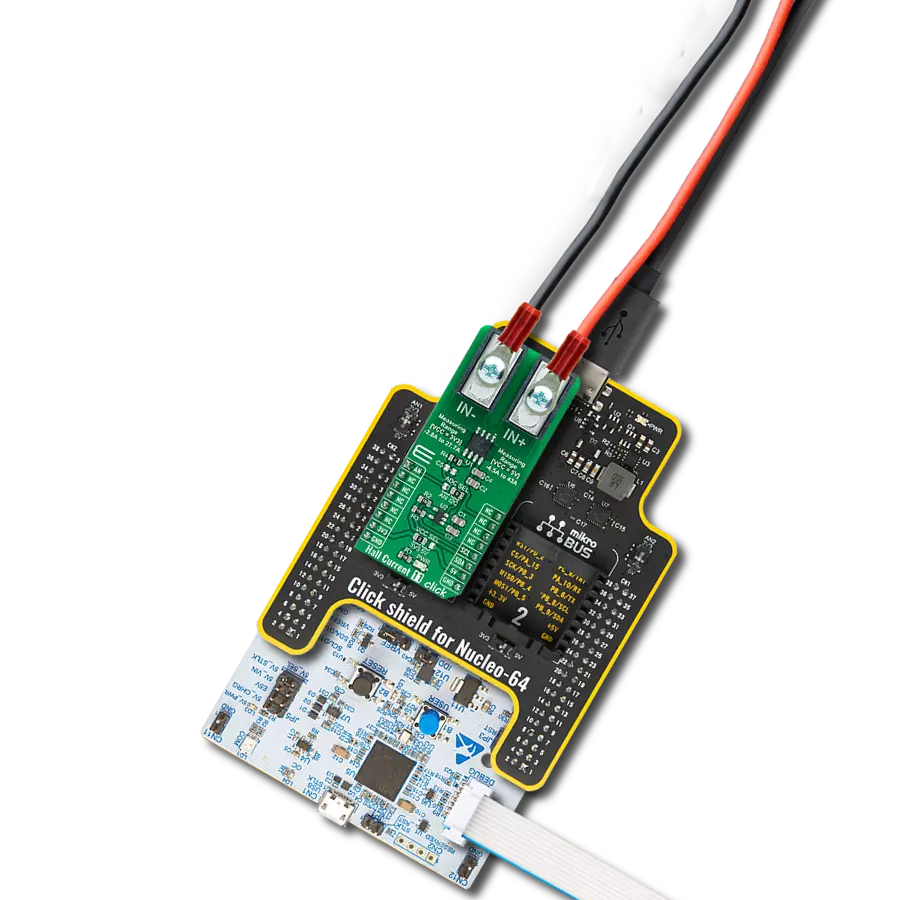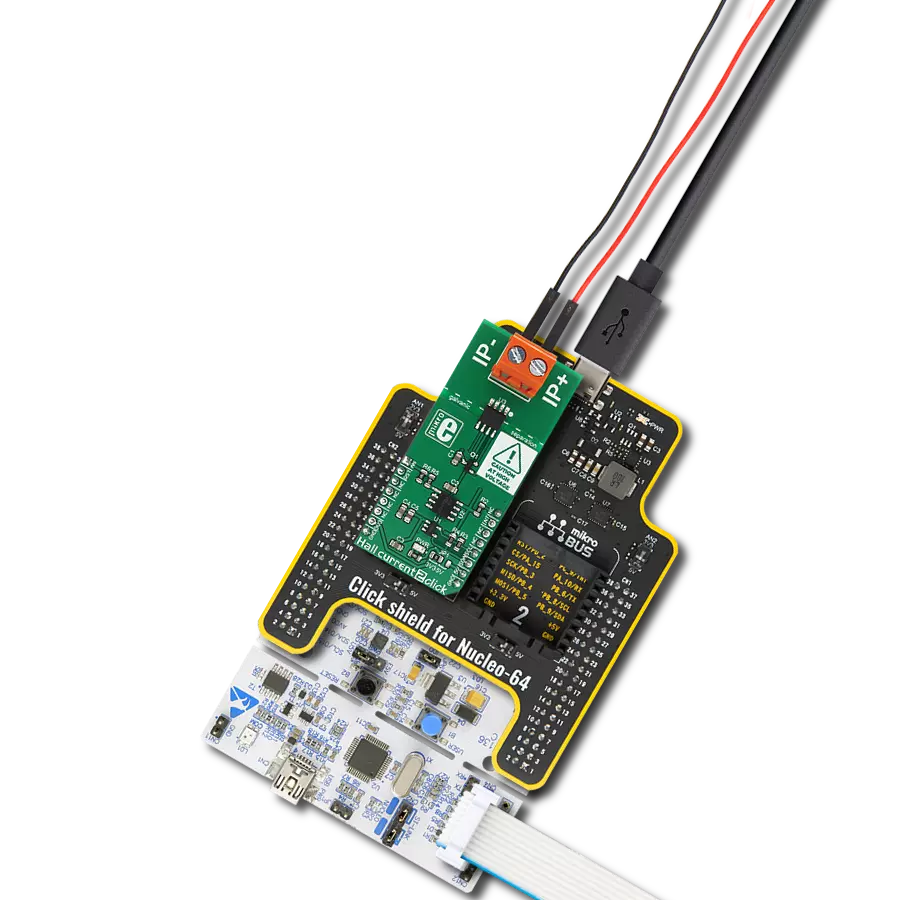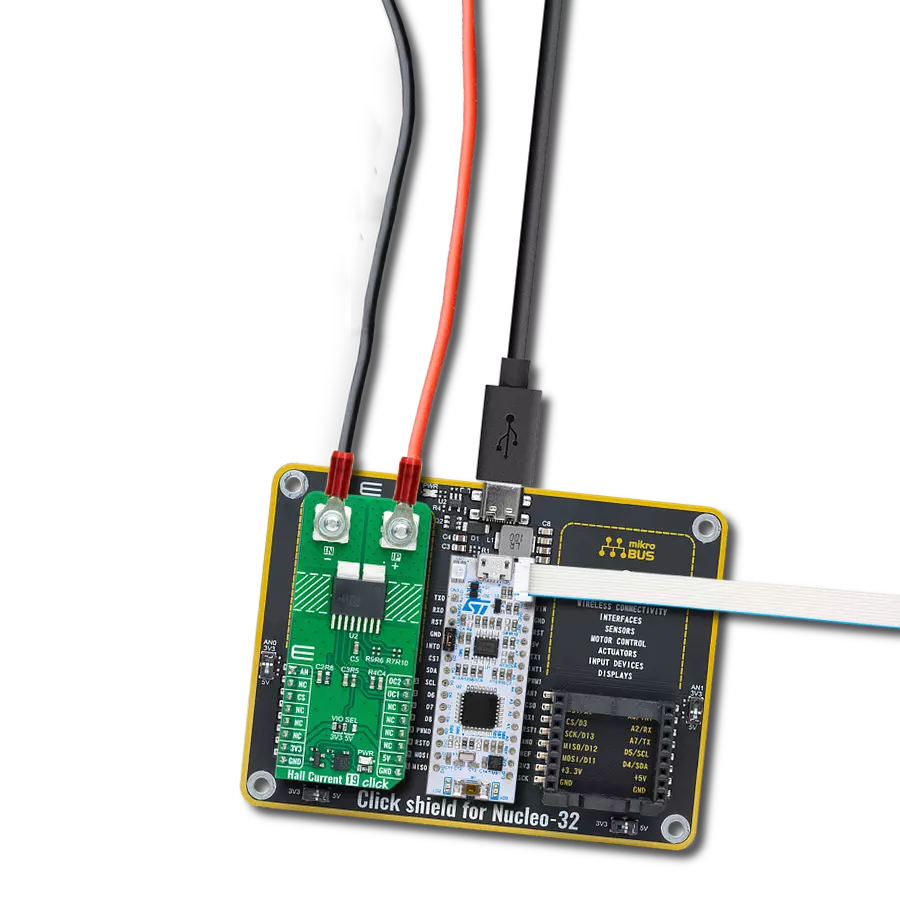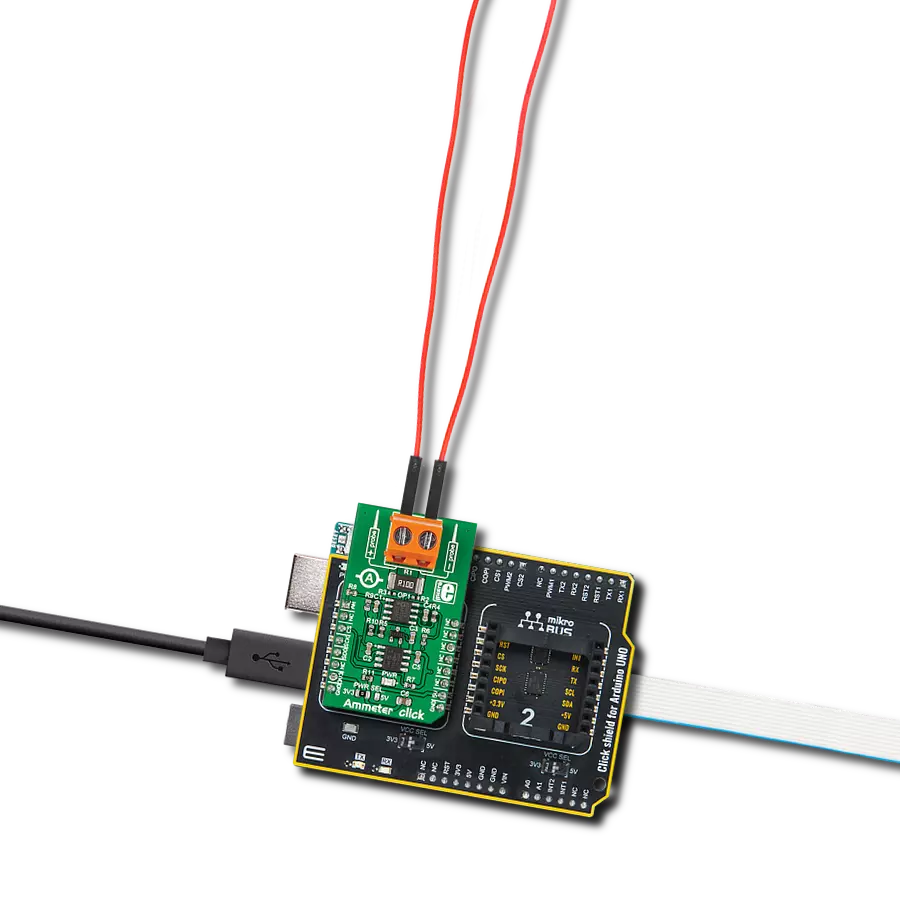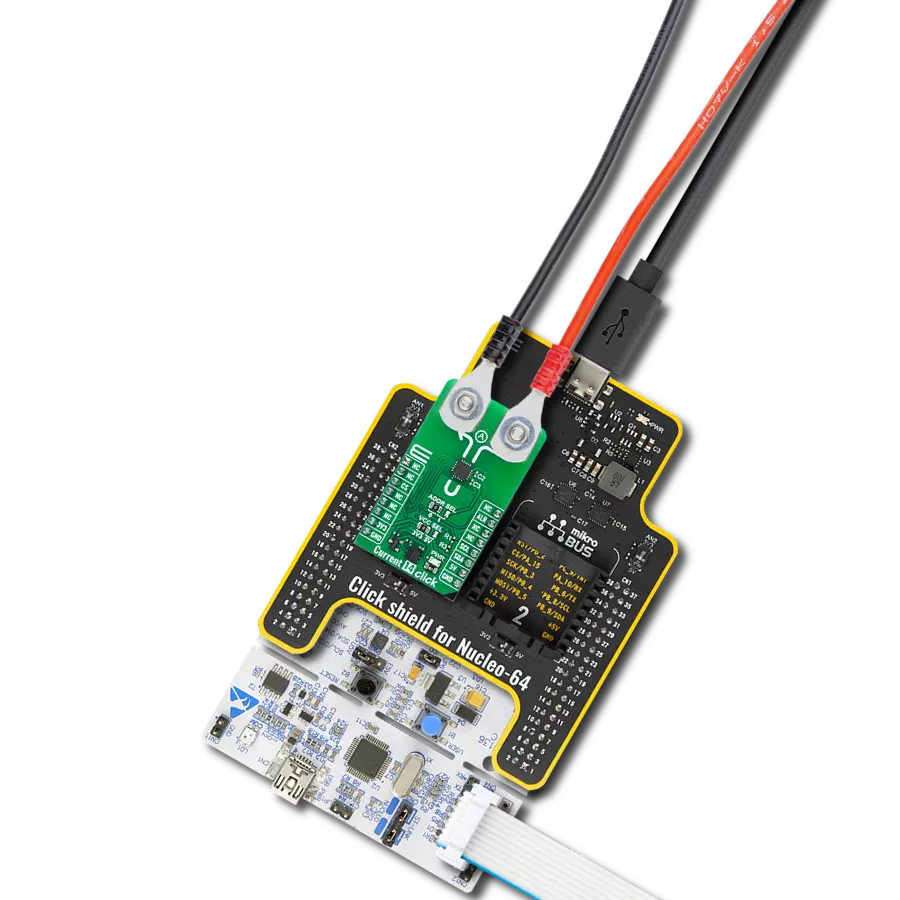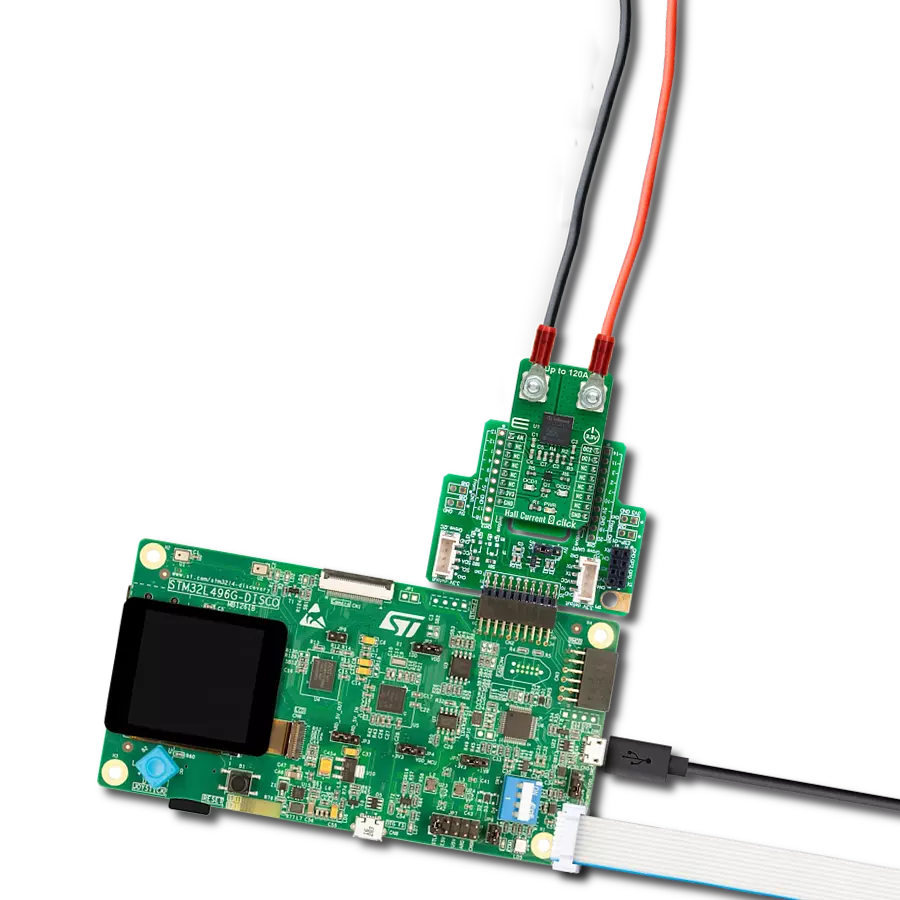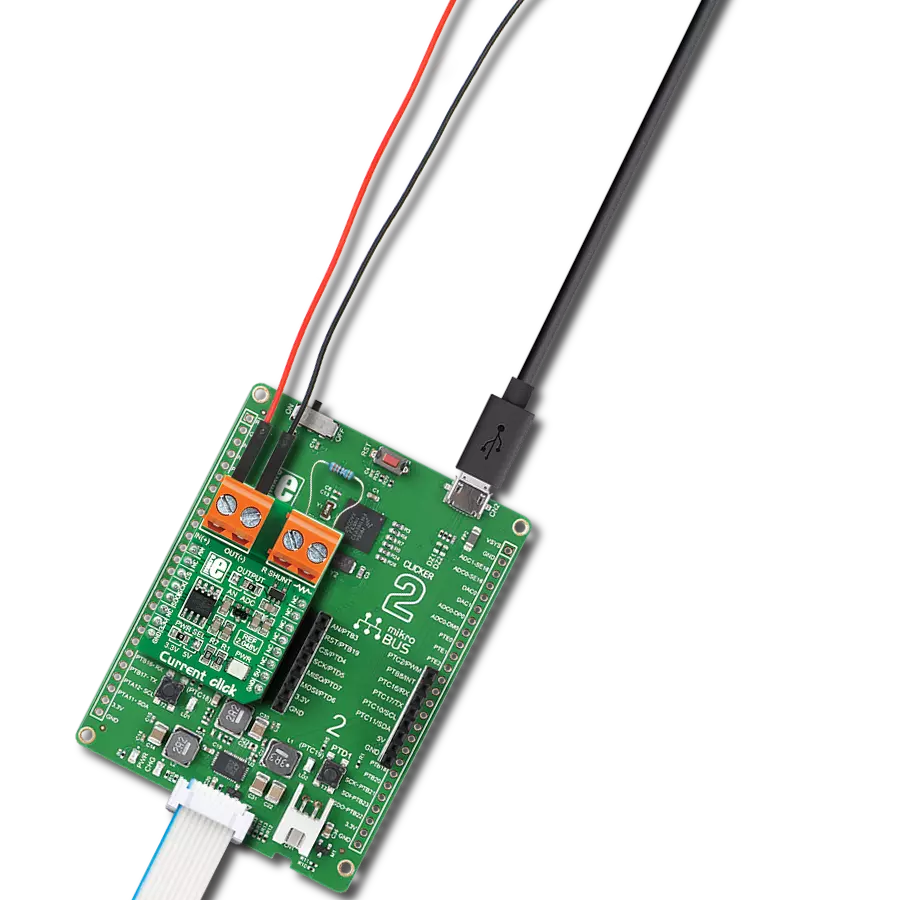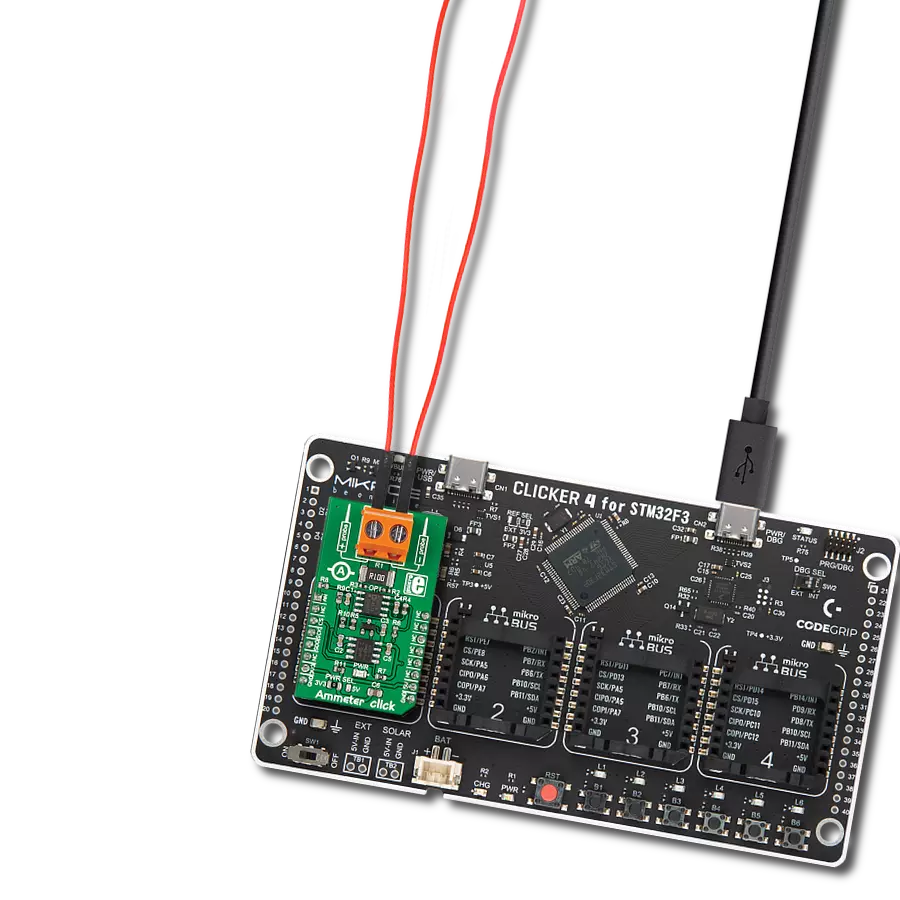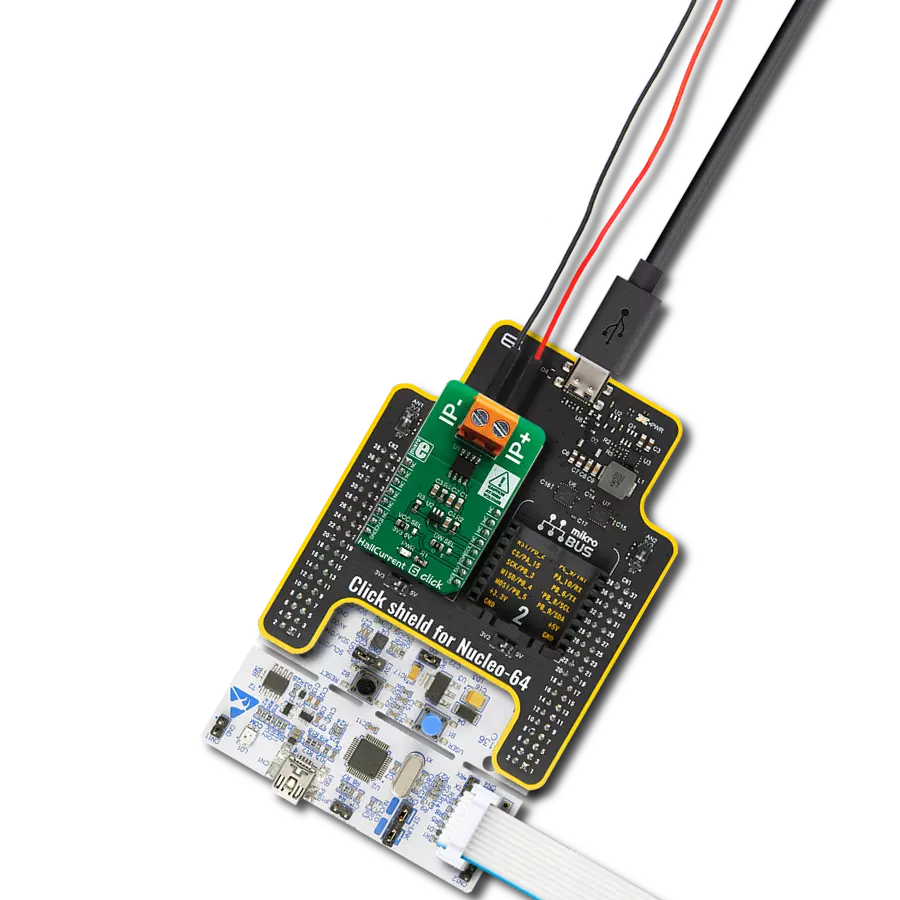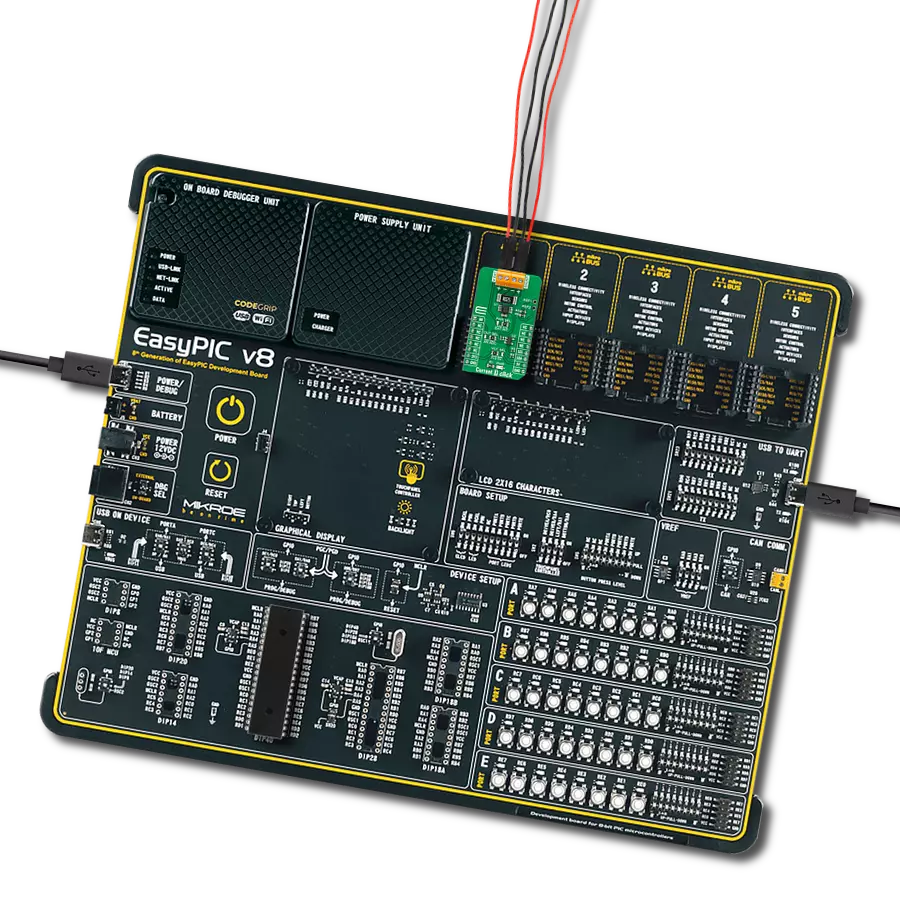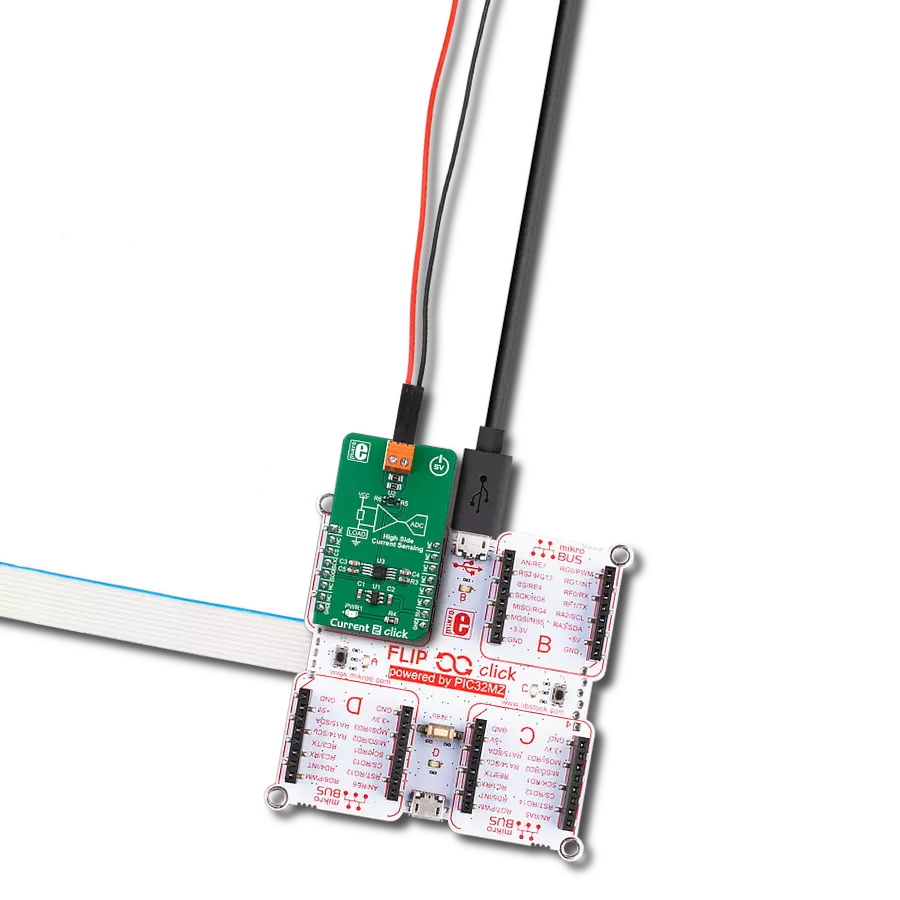Enhance your engineering expertise with the unwavering reliability and meticulous precision of our advanced current sensing solution
A
A
Hardware Overview
How does it work?
Current 5 Click is based on the INA381, a zero-drift topology, a current-sensing amplifier with an integrated comparator that can be used in both low-side and high-side current-sensing and protection applications from Texas Instruments. This current-sensing amplifier accurately measures voltages developed across the current-sensing resistor (also known as current-shunt resistors) on common-mode voltages far exceeding the device supply voltage. Current is measured on IN load connection terminal, withstanding the full common-mode voltages from –0.2V to +26V at the input pins when the supply voltage is removed without causing damage. The INA381 also uses a reference input from an onboard REF potentiometer that simplifies setting the corresponding current threshold level for out-of-range comparison. Combining the precision measurement of the current-sense amplifier and the onboard comparator enables an all-in-one overcurrent detection device. This combination creates a highly-accurate design that quickly detects out-of-range conditions and allows the system to take
corrective actions to prevent potential component or system-wide damage. The amplified output voltage of the INA381 is developed across the onboard current-sensing resistor, which is the input voltage across the IN terminal (IN+ and IN– pins) multiplied by the gain of the amplifier (200V/V). The output voltage of the INA381 is then converted to a digital value using the ADC121S021, a low-power, single-channel 12-bit analog to digital converter (ADC), with a high-speed SPI interface also from Texas Instruments. The INA381‘s integrated comparator is designed to quickly detect when the sense current is out-of-range, and provide an interrupt alert signal, routed to the INT pin of the mikroBUS™ socket, for quicker and faster responses. This alert output can be configured to operate in two modes, transparent or latched, selectable according to the logic state on the RST pin of the mikroBUS™ socket. In transparent mode, the output status follows the input state, while in latched mode, the alert output is cleared only when the latch is reset. The onboard comparator in the INA381 is designed to reduce the possibility of oscillations in the
alert output when the measured signal level is near the over-limit threshold level due to noise, with a hysteresis of 50mV. When the voltage on the comparator input exceeds the voltage developed at the comparator reference input, the alert signal sets to a low logic state. The output voltage then must drop to less than the reference input threshold voltage by the hysteresis level of 50mV so that the alert pin de-asserts and returns to the nominal high state. Also, this board allows the user to change the hysteresis from a preset value of 50mV via an onboard Hyst potentiometer. The user can also bring external signals, such as REF and HYST, on the eponymous onboard headers. This Click board™ can operate with either 3.3V or 5V logic voltage levels selected via the VCC SEL jumper. This way, both 3.3V and 5V capable MCUs can use the communication lines properly. Also, this Click board™ comes equipped with a library containing easy-to-use functions and an example code that can be used, as a reference, for further development.
Features overview
Development board
Nucleo-64 with STM32F091RC MCU offers a cost-effective and adaptable platform for developers to explore new ideas and prototype their designs. This board harnesses the versatility of the STM32 microcontroller, enabling users to select the optimal balance of performance and power consumption for their projects. It accommodates the STM32 microcontroller in the LQFP64 package and includes essential components such as a user LED, which doubles as an ARDUINO® signal, alongside user and reset push-buttons, and a 32.768kHz crystal oscillator for precise timing operations. Designed with expansion and flexibility in mind, the Nucleo-64 board features an ARDUINO® Uno V3 expansion connector and ST morpho extension pin
headers, granting complete access to the STM32's I/Os for comprehensive project integration. Power supply options are adaptable, supporting ST-LINK USB VBUS or external power sources, ensuring adaptability in various development environments. The board also has an on-board ST-LINK debugger/programmer with USB re-enumeration capability, simplifying the programming and debugging process. Moreover, the board is designed to simplify advanced development with its external SMPS for efficient Vcore logic supply, support for USB Device full speed or USB SNK/UFP full speed, and built-in cryptographic features, enhancing both the power efficiency and security of projects. Additional connectivity is
provided through dedicated connectors for external SMPS experimentation, a USB connector for the ST-LINK, and a MIPI® debug connector, expanding the possibilities for hardware interfacing and experimentation. Developers will find extensive support through comprehensive free software libraries and examples, courtesy of the STM32Cube MCU Package. This, combined with compatibility with a wide array of Integrated Development Environments (IDEs), including IAR Embedded Workbench®, MDK-ARM, and STM32CubeIDE, ensures a smooth and efficient development experience, allowing users to fully leverage the capabilities of the Nucleo-64 board in their projects.
Microcontroller Overview
MCU Card / MCU
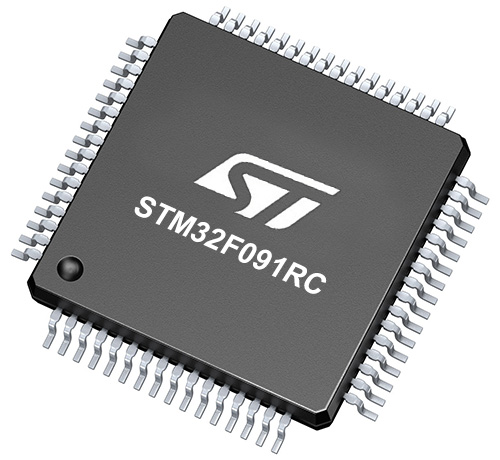
Architecture
ARM Cortex-M0
MCU Memory (KB)
256
Silicon Vendor
STMicroelectronics
Pin count
64
RAM (Bytes)
32768
You complete me!
Accessories
Click Shield for Nucleo-64 comes equipped with two proprietary mikroBUS™ sockets, allowing all the Click board™ devices to be interfaced with the STM32 Nucleo-64 board with no effort. This way, Mikroe allows its users to add any functionality from our ever-growing range of Click boards™, such as WiFi, GSM, GPS, Bluetooth, ZigBee, environmental sensors, LEDs, speech recognition, motor control, movement sensors, and many more. More than 1537 Click boards™, which can be stacked and integrated, are at your disposal. The STM32 Nucleo-64 boards are based on the microcontrollers in 64-pin packages, a 32-bit MCU with an ARM Cortex M4 processor operating at 84MHz, 512Kb Flash, and 96KB SRAM, divided into two regions where the top section represents the ST-Link/V2 debugger and programmer while the bottom section of the board is an actual development board. These boards are controlled and powered conveniently through a USB connection to program and efficiently debug the Nucleo-64 board out of the box, with an additional USB cable connected to the USB mini port on the board. Most of the STM32 microcontroller pins are brought to the IO pins on the left and right edge of the board, which are then connected to two existing mikroBUS™ sockets. This Click Shield also has several switches that perform functions such as selecting the logic levels of analog signals on mikroBUS™ sockets and selecting logic voltage levels of the mikroBUS™ sockets themselves. Besides, the user is offered the possibility of using any Click board™ with the help of existing bidirectional level-shifting voltage translators, regardless of whether the Click board™ operates at a 3.3V or 5V logic voltage level. Once you connect the STM32 Nucleo-64 board with our Click Shield for Nucleo-64, you can access hundreds of Click boards™, working with 3.3V or 5V logic voltage levels.
Used MCU Pins
mikroBUS™ mapper
Take a closer look
Click board™ Schematic

Step by step
Project assembly
Software Support
Library Description
This library contains API for Current 5 Click driver.
Key functions:
current5_get_current- Get currentcurrent5_get_adc- Read raw adc valuecurrent5_get_alert- Get alert pin state
Open Source
Code example
The complete application code and a ready-to-use project are available through the NECTO Studio Package Manager for direct installation in the NECTO Studio. The application code can also be found on the MIKROE GitHub account.
/*!
* @file main.c
* @brief Current5 Click example
*
* # Description
* This example application showcases ability of the device
* to read raw adc data and calculate the current from it.
*
* The demo application is composed of two sections :
*
* ## Application Init
* Initialization of communication modules(SPI, UART) and
* additional pins for controlling device(RST, ALERT->INT).
*
* ## Application Task
* Read ADC data with SPI communication and calculate input current.
*
* @author Luka Filipovic
*
*/
#include "board.h"
#include "log.h"
#include "current5.h"
static current5_t current5;
static log_t logger;
void application_init ( void )
{
log_cfg_t log_cfg; /**< Logger config object. */
current5_cfg_t current5_cfg; /**< Click config object. */
/**
* Logger initialization.
* Default baud rate: 115200
* Default log level: LOG_LEVEL_DEBUG
* @note If USB_UART_RX and USB_UART_TX
* are defined as HAL_PIN_NC, you will
* need to define them manually for log to work.
* See @b LOG_MAP_USB_UART macro definition for detailed explanation.
*/
LOG_MAP_USB_UART( log_cfg );
log_init( &logger, &log_cfg );
log_info( &logger, " Application Init " );
// Click initialization.
current5_cfg_setup( ¤t5_cfg );
CURRENT5_MAP_MIKROBUS( current5_cfg, MIKROBUS_1 );
err_t init_flag = current5_init( ¤t5, ¤t5_cfg );
if ( SPI_MASTER_ERROR == init_flag )
{
log_error( &logger, " Application Init Error. " );
log_info( &logger, " Please, run program again... " );
for ( ; ; );
}
log_info( &logger, " Application Task " );
}
void application_task ( void )
{
float current = 0;
current5_get_current( ¤t5, ¤t );
log_printf( &logger, " > Current[ A ]: %.2f\r\n", current );
log_printf( &logger, "*************************************************\r\n" );
Delay_ms ( 300 );
}
int main ( void )
{
/* Do not remove this line or clock might not be set correctly. */
#ifdef PREINIT_SUPPORTED
preinit();
#endif
application_init( );
for ( ; ; )
{
application_task( );
}
return 0;
}
// ------------------------------------------------------------------------ END
Additional Support
Resources
Category:Current sensor



















